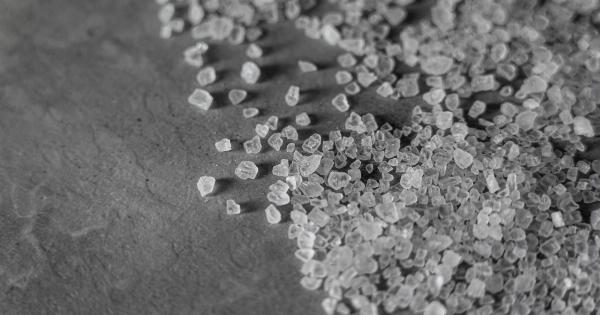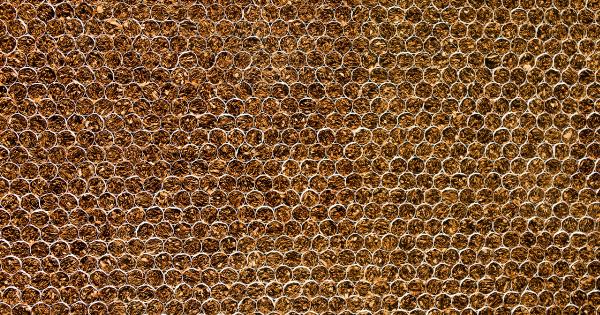Chemicals are present in many aspects of our daily lives, whether it’s the food we eat, the products we use, or even the air we breathe. While some chemicals are necessary and harmless, others can be incredibly dangerous to our health.
One area where we often overlook the potential for exposure to harmful chemicals is in our own homes, particularly in our bathtubs. Many of us enjoy a relaxing soak in the tub, but little do we know that we are often bathing in a concoction of dangerous chemicals. In this article, we will explore the various chemicals commonly found in bath products and their potential risks.
The Allure of Bath Products
Bathing has been a cherished ritual since ancient times. From ancient Roman bathhouses to modern-day spa retreats, people have sought relaxation and rejuvenation through the act of bathing.
Over the years, bath products have evolved to enhance the sensory experience. We are now spoiled for choice with a wide array of scented bubble baths, bath bombs, oils, soaps, and other products promising to create a luxurious and calming experience.
Sodium Lauryl Sulfate (SLS)
One of the most common chemicals found in bath products is Sodium Lauryl Sulfate (SLS). This surfactant is responsible for creating the lather and foam that many of us associate with cleanliness.
However, SLS has come under scrutiny due to its potential health risks. It can strip the natural oils from our skin, leading to irritation, dryness, and even allergic reactions for some individuals.
Parabens
Parabens are a class of preservatives widely used in cosmetics and personal care products, including bath products. They help prevent the growth of bacteria, mold, and yeast, extending the shelf life of these products.
However, studies have shown that parabens can mimic estrogen in the body, potentially disrupting the endocrine system and leading to various health issues.
Phthalates
Phthalates are a group of chemicals used to soften plastics and increase the flexibility of certain materials. They are often found in fragrances and can be absorbed through our skin when using bath products that contain them.
Phthalates have been linked to hormonal disruptions, developmental issues, and even reproductive problems.
Formaldehyde
Formaldehyde is a colorless gas commonly used in the production of plastics, resins, and other chemical products. It is also found in some bath products as a preservative.
While the use of formaldehyde has been regulated in many countries, exposure to this chemical can still occur. Prolonged exposure to formaldehyde has been linked to a higher risk of respiratory issues, skin irritation, and even certain types of cancer.
Artificial Fragrances
That sweet, flowery scent of your favorite bath product may not be as innocent as it seems.
Many artificial fragrances used in bath products contain a complex mixture of chemicals, some of which can trigger allergies, respiratory problems, and skin irritation. Since fragrance formulas are often considered trade secrets, manufacturers are not required to disclose the exact ingredients used. This lack of transparency makes it challenging for consumers to make informed choices.
Triclosan
Triclosan is an antibacterial and antifungal agent commonly added to bath products such as soaps and body washes.
While the intention behind its use is to kill bacteria and prevent the spread of infections, studies have shown that overuse of triclosan can lead to antibiotic resistance. Additionally, triclosan can disrupt hormone regulation and negatively affect our immune system.
FD&C Colorants
The bright and vibrant colors of bath products are often achieved through the use of FD&C colorants. These synthetic dyes are regulated by the U.S.
Food and Drug Administration (FDA) to ensure their safety for use in cosmetics and personal care products. However, certain colorants have been linked to skin irritation and allergic reactions in sensitive individuals. Moreover, some studies suggest a possible link between FD&C colorants and attention deficit hyperactivity disorder (ADHD) in children.
Propylene Glycol
Propylene Glycol is a common ingredient in bath products as it helps to retain moisture, giving the skin a smooth and hydrated feel. However, it is also used in antifreeze and industrial solvents.
While the concentration of propylene glycol in personal care products is generally low, prolonged exposure can cause skin irritation and allergic reactions in some individuals.
Talc
Talc is a mineral often found in baby powders, bath powders, and body powders. It is used to absorb moisture and reduce friction on the skin. However, concerns have been raised regarding the potential link between talc and ovarian cancer.
While the evidence is still inconclusive, it is advised to limit exposure to talc-based products, especially in sensitive areas.
Methylisothiazolinone (MIT)
Methylisothiazolinone, commonly known as MIT, is a preservative used in many personal care products, including bath products.
While it helps extend the shelf life of these products, it can also cause allergic reactions, such as redness, itching, and swelling, in some individuals.
The Importance of Reading Labels
With the growing awareness of the potential dangers lurking in bath products, it is crucial to become an informed consumer. One of the simplest ways to do this is by reading product labels carefully.
Take note of the ingredients used and research any chemicals that you are unfamiliar with.
Additionally, consider opting for products that are labeled as “natural,” “organic,” or “chemical-free.” While these terms are not strictly regulated, they often indicate a lower likelihood of exposure to harmful chemicals.
Making Safer Choices
It is understandable that giving up your favorite bath products can be challenging. However, there are steps you can take to minimize your exposure to harmful chemicals while still enjoying a relaxing bath.
Consider reducing the frequency of bubble baths or using smaller amounts of product to limit your contact with potentially harmful chemicals. Explore natural alternatives, such as organic soaps or bath bombs made with essential oils. Ultimately, being proactive in choosing safer options can go a long way in safeguarding your health.
Conclusion
Soaking in a luxurious bath can be a wonderful experience, but it is essential to be aware of the potential hazards that may come with it.
The chemicals commonly found in bath products can pose risks to our health, ranging from skin irritation to hormonal disruptions and even chronic diseases. By educating ourselves about these chemicals, reading labels, and making informed choices, we can reduce our exposure and promote a safer bathing routine. Remember, your health is worth more than a fancy bubble bath.





























